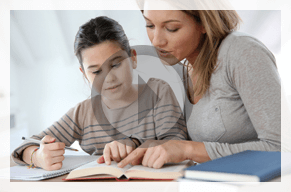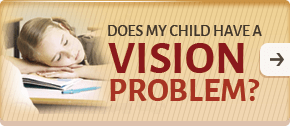Vision Therapy for Autistic & Special Needs Children
Vision Therapy for AutismChildren with Special Needs have the same vision problems as neuro-typical children. These disorders may include nearsightedness or farsightedness, as well as other eye-coordination disorders such as
- eye turns (strabismus)
- eye movement dysfunction
- “lazy eye” (amblyopia)
- poor eye teaming and coordination
Eye-coordination disorders such as these cause the child to have a distorted sense of what he is viewing. Depth perception and other visual information-processing problems are also common.
Vision problems of this nature can add to your child’s challenges. A hidden visual dysfunction may be affecting your child’s behavior, interfering with his ability to read and learn, and reducing his ability to perform routine tasks.
Vision Problems Often Get Overlooked
Often, the Special Needs child is unable to sit still for a normal eye exam, which can result in an inaccurate or incomplete evaluation. The child may have an intermittent (occasional), rather than a constant eye turn that could go undetected. The eye chart exam measures what the child can see at 20 feet away, but will miss how he sees things up close, such as words in a book. And, unfortunately, children don’t know how they are supposed to see, so they rarely complain, leaving certain problems hidden.
 Most people don’t realize that our eyes are actually part of the brain. So it stands to reason that if someone has a neurological disorder that impacts the brain, that their vision would be compromised in some way. Being able to see things clearly from a distance of 20 feet (i.e., “20/20”) is just one of over 15 visual skills required to read, learn and function in life.
Most people don’t realize that our eyes are actually part of the brain. So it stands to reason that if someone has a neurological disorder that impacts the brain, that their vision would be compromised in some way. Being able to see things clearly from a distance of 20 feet (i.e., “20/20”) is just one of over 15 visual skills required to read, learn and function in life.
In fact, 35 areas of the brain are primarily or totally involved with the processing of visual information. At least 305 intra-cortical pathways link the 35 areas; and, 70% of the sensory information that goes to the brain is visual.
While 1 out of 4 normal children struggle with reading and learning because of undiagnosed vision problems, research is showing that a significantly higher percentage of children with special needs have vision problems which, when corrected, can make a huge difference in their lives.
Signs and Symptoms of a Vision Problem in Special Needs Children
- Skips/repeats lines when reading
- Omits small words when reading
- Poor reading comprehension
- Homework takes longer than it should
- Reduced visual attention
- Trouble keeping attention on reading
- Difficulty completing assignments on time
- Difficulty copying from board
- Tilts head/closes one eye when reading
- One eye turns in or out
- Avoids near work/reading
- Unable to listen and look at same time
- Holds reading material too close
- Poor handwriting
- Clumsy/knocks things over
- Car/motion sickness
- Unusual neck and body postures
- Visual perceptual problems
- Uncontrolled eye shaking (Nystagmus)
If your child displays any of these symptoms, an undetected, underlying but treatable vision problem may be contributing to the problem.
Vision Therapy
Vision Therapy can often help children with special needs interact better with their environment. As a result they often have less temper tantrums because they have a better understanding of their surroundings and therefore better communication.
Continue Reading... What Is Vision Therapy? >>










